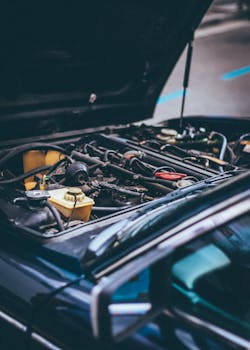
Revolutionizing Asset Management with Nanite in UE5
Nanite is Unreal Engine 5’s groundbreaking virtualized geometry system designed to streamline asset rendering. It fundamentally changes how developers manage and display highly detailed models in open-world environments.
This technology allows for unprecedented levels of detail without the traditional performance penalties, enabling massive, intricate worlds to run smoothly on modern hardware. Nanite automatically handles level of detail transitions, removing the need for manual LOD creation and optimization.
Understanding Nanite’s Role in Open-World Rendering
Open-world games demand extensive terrain, foliage, and object complexity, which often strain rendering pipelines. Nanite’s virtualized micropolygon geometry optimizes rendering by processing only visible detail at the required resolution.
This selective rendering radically reduces the number of polygons processed each frame, enhancing frame rates and maintaining visual fidelity even in expansive scenes. Its streaming system dynamically loads geometry data, ensuring memory and performance balance on large maps.
Strategic Techniques for Nanite Optimization
Asset Preparation and Best Practices
Proper asset creation is critical to leverage Nanite’s strengths fully. Developers must ensure models have clean topology and avoid unsupported features such as thin geometry or blended materials.
High-density meshes are ideal, but artists should remove unnecessary components that do not contribute to visible detail. Nanite excels with static meshes; therefore, planning around movable assets is essential to avoid performance pitfalls.
Managing Shader Complexity and Material Use
While Nanite optimizes geometry, material complexity remains a key factor affecting rendering performance. Simplifying shaders and reducing the number of unique materials can significantly enhance frame rates in open-world settings.
Utilizing shared materials and uniform shader parameters ensures consistent performance gains across multiple objects. Developers should also consider baking complex material effects into textures to reduce runtime calculations.
Leveraging Level Streaming and World Partition Systems
Nanite works best in conjunction with UE5’s World Partition system, which segments large open worlds into manageable chunks. This system dynamically loads and unloads cells based on player proximity to optimize resource usage.
Developers should design streaming grids carefully to minimize asset overlap and reduce draw calls. Efficient world partitioning ensures Nanite’s geometry streaming aligns with memory budgets and CPU constraints.
Performance Metrics and Profiling for Nanite
Identifying Bottlenecks in Nanite Workflows
Profiling tools like Unreal Insights and GPU visualizers provide crucial data on Nanite’s impact on rendering performance. Common bottlenecks include overdraw, shader complexity, and CPU-GPU synchronization delays.
Regular profiling during development allows teams to pinpoint inefficiencies and adjust asset complexity or streaming strategies accordingly. Monitoring frame time distributions helps balance visual quality with responsiveness.
Balancing Visual Fidelity and Performance Targets
Optimal Nanite usage requires deliberate trade-offs between polygon counts and frame rate goals. Developers should define target hardware specifications early and tailor asset detail levels to meet those benchmarks.
Employing adaptive quality settings that adjust Nanite detail dynamically based on performance feedback further refines user experience. This approach maintains stable frame rates without compromising the open-world’s visual richness.
Comparison of Nanite and Traditional LOD Systems
| Aspect | Nanite | Traditional LOD |
|---|---|---|
| Geometry Handling | Virtualized micropolygon streaming with automatic detail adjustment | Manual pre-built LOD meshes with discrete transitions |
| Developer Overhead | Minimal, no need for LOD creation | High, requires multiple mesh versions and setup |
| Performance Scaling | Smooth scaling with scene complexity | Potential performance spikes due to LOD swaps |
| Memory Usage | Efficient streaming reduces memory footprint | Fixed memory usage for all LOD meshes |
| Suitability for Open Worlds | Excellent, supports vast, detailed environments | Limited, can become cumbersome for large asset counts |
Future Directions and Enhancements for Nanite in Open-World Games
Integration with Dynamic Lighting and Ray Tracing
Current developments focus on deeper Nanite compatibility with dynamic lighting and real-time ray tracing. These advancements will further elevate visual realism in open-world scenarios without compromising performance.
Enhancements to shader and geometry synchronization aim to reduce latency and improve frame stability during complex lighting interactions. Such progress ensures Nanite remains a pivotal technology in next-generation open-world game design.
Expanding Support for Animated and Procedural Assets
Research is underway to extend Nanite’s capabilities beyond static meshes to support animated and procedural geometries. This expansion will enable developers to incorporate highly detailed characters and dynamic environmental elements using Nanite.
Overcoming challenges related to vertex processing and deformation will unlock new possibilities for immersive open worlds with rich, interactive content. These improvements promise to broaden Nanite’s applicability across diverse game asset types.